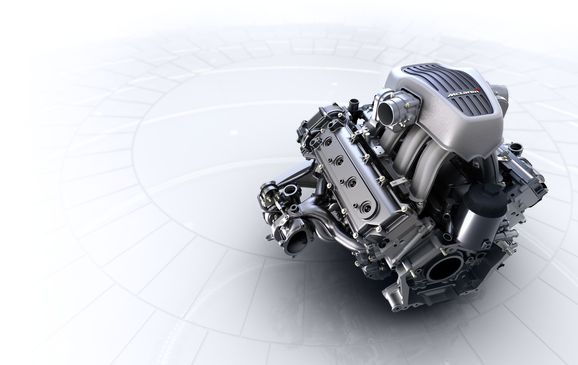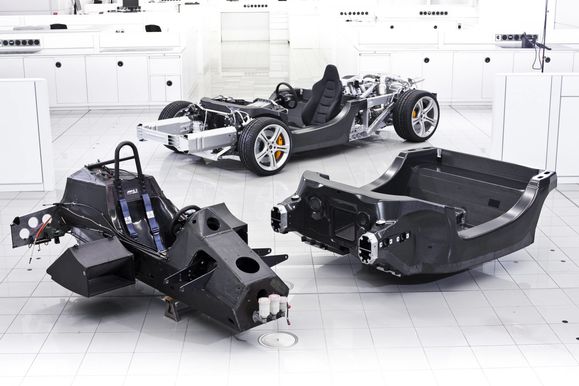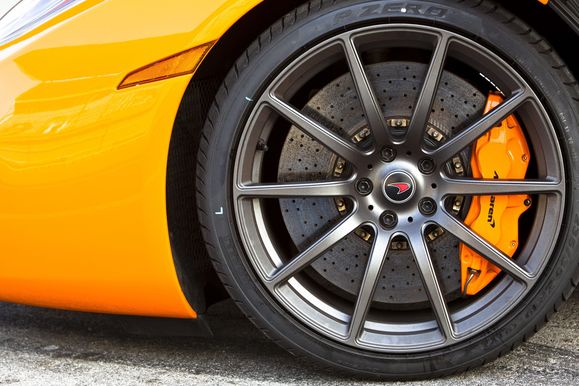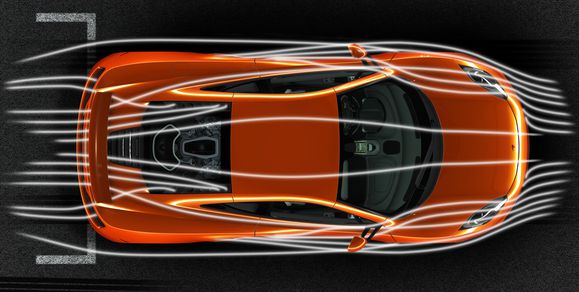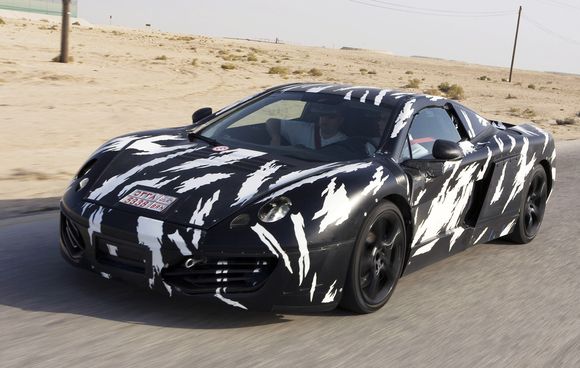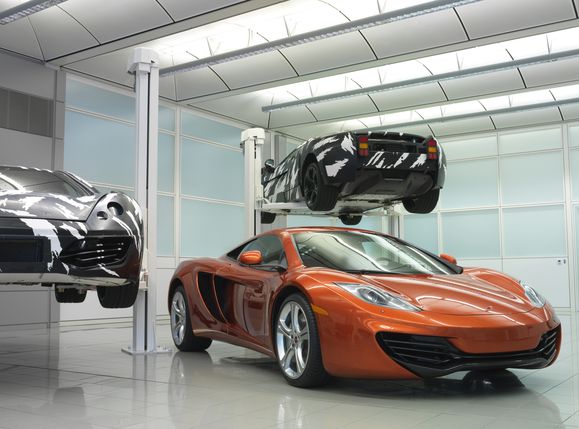Ever wondered how to tell an MP4-12C prototype to the real thing? Matt Saunders finds out while learning more about how the car is engineered.
Right now, there can’t be many more exciting places to work anywhere in the global motor industry than Chertsey Road, Woking. That’s because McLaren Automotive is about to produce. The paint is now dry on the company’s new £40 million McLaren Production Centre, from where, in a matter of weeks, the MP4-12C supercar will begin to roll out to expectant customers. And so, after four years of intensive design and engineering and close to £750m of investment, the world is about to discover exactly how good one of the most anticipated sports cars in history really is.
But what if the genesis of this incredible car stopped now, before even ‘job one’ – the very first customer order – appeared complete at the factory shutters? What would Ron Dennis have to show for all that invested money and effort? The answer, aside from so many hard drives’ worth of digital ‘intellectual property’ and a very large, very quiet factory, is a warehouse full of prototypes.
It’s by the design, specification, assembly, testing and subsequent disassembly of prototypes like these that all new cars find their way to the road. These are the cars that bridge the gap between the designers’ vision and the finished product. There are prototypes conceived to test the effectiveness of primary structural systems, to carry out engine and gearbox proving, for dynamic and aerodynamic development, for crash testing and active safety set-up, for the configuration of onboard electronics, for hot and cold-weather proving, for the verification of final production design and more.
You’d be amazed at how many ‘mule’ versions of the MP4-12C McLaren needed to build before it could even contemplate building the very first customer car. You’d be even more amazed, believe me, at what they cost, and at the provenance of some of the parts that lurk beneath the surface.
Standing in one of the McLaren Technology Centre’s impossibly clean workshops, we’re currently looking at four of those prototypes. The nearest one to us is painted, trimmed, flawlessly finished – indistinguishable from a production-line 12C, really. The farthest, by contrast, is outwardly indistinguishable from an Ultima GTR kit car. And we’re about to find out exactly how McLaren progressed from one to the other.
Masters of disguise
“We’ve built 66 mule cars to date out of the workshops at the MTC,” explains McLaren programme director Mark Vinnels. “We’ve got eight more to go, followed by a further 16 ‘marketing cars’ – and that’s all before job one starts at the factory. The very earliest were little more than a running chassis, while the latest are built using production-ready parts and tooling; those ones don’t cost an awful lot more than production-line cars.”
McLaren called its very earliest prototype MP4-12Cs, built at the beginning of 2008, ‘MVs’, short for ‘mule vehicles’. There were three of them: two for very early powertrain work, the other for the earliest proving of McLaren’s Proactive interlinked hydraulic roll-control suspension.
“Our suspension car was photographed a few times,” explains Mark, pointing to the black Ultima-based chassis at the far end of the room. “We needed a car of roughly the right size and weight to experiment with this active suspension set-up, and the Ultima was perfect.” Must have delivered a frisson of amusement, too, throwing journalists and spy photographers so far off the scent with a mule car as left-field as Ultima.
After the MVs came the CPs, or concept prototypes, represented in our photos by the black and white car. These were the first MP4-12Cs that were vaguely representative of the final car in terms of underbody and outward structure. They hit the road fully two years ago, before the final production design of the car has been made public, wearing heavy disguise.
“We had several early carbon Monocells pressed for the CPs,” says Vinnels, “and we mainly used the cars to explore our structural options. We’d already committed to a carbonfibre tub and knew we wanted to make it as light as possible, but not by compromising stiffness. And so our CPs had tubs varying from 80-something kilos at their heaviest, down to 69 at their lightest.” They were expensive, too, costing McLaren up to half a million pound each.
A closer look at the zebra-striped concept prototype shows some intriguing details. From a distance it’s clearly a 12C, thanks largely to the distinctive air intakes on each side, but the closer you get, the more differences you see. The CP has got swollen front and rear bumper, Perspex windows and door handles that could have been lifted from an ironmonger’s bottom drawer. It’s something of a lashed-up masterpiece, but it evidently served its purpose.
Come 2009, after the CPs, came the first breed of almost undisguised prototypes: the XPs, or experimental prototypes. Vinnels says these were “mules with the right body on”, like the all-black 59-plate mule in our photos; they were ‘real’ cars built with prototype tools on the old SLR line at the MTC. It was in one of these that McLaren hotshoes Lewis Hamilton and Jenson Button got their first taste of the MP4-12C.
The XPs were also the first 12C prototypes to hit the development trail in earnest, running engine, chassis and electronics calibration tests all over Europe and doing hot and cold-weather tests. McLaren’s proving programme took in the IDIADA proving ground in Catalunya, as well as Nardo in Italy, the Paul Ricard circuit in France and the Nürburgring in Germany. It included a 10,000km flat-out handling test at Nardo conceived to push the MP4-12C’s chassis to the limit of its capabilities and durability, and was driven in shifts. It also included an intriguing 5000km powertrain test at IDIADA that Vinnels calls the ‘IDIschleife’. “We data-logged all the throttle positions, braking positions and gearchange points from a flat-out lap of the Nordschleife,” he says, “and then repeated them on the high-speed bowl at IDIADA, over longer than we could have at the ‘Ring. It was a great stress test for the
engine and gearbox.”
It was with the XPs that McLaren’s crash testing programme for the MP4-12C also began. “We had to be sure that the basic underbody structure of the car was strong. Structural parts like the Monocell, the car’s primary crash structures and the body-in-white around the bulheads – they’re all long-lead items. It takes a long time to change their design, and doing that can have all sorts of knock-on effects on the design of other components, so if you do need to redesign anything major, you need to know early on.”
“Altogether, we threw 12 cars at the wall,” Vinnels goes on. “We’ve done well over a hundred barrier tests and more than 250 sled tests with all kinds of offset barriers and poles, and at various speeds. And we’re very happy with the car’s crash performance. The basic passenger Monocell is sufficiently strong that we could recover several of the tubs used in one test, fit new crash members and re-use them.”
Uncompromising approach
Standing in front of the final prototype in the workshop, Vinnels explains the raison d’être of a validation prototype, or VP. “These cars are built using production tooling; they allow us to start assessing and fine-tuning material quality and fit and finish on the car, as well as to continue tuning electronics, driving characteristics and NVH.
“We’ve built 22 VPs to date, having started in January 2010,” Vinnels says, speaking back in December, “and by the time we get to number 30 we’ll have arrived at a car we’re pretty much ready to sign off.”
There is one further prototype stage, he explains, during which McLaren will make a number of production prototypes, or PPs. They’ll come off the factory line just like any customer car, allowing the team to validate their quality and performance one last time. If the MPC production cycle isn’t quite right – if designed-in, systemic problems are adversely affecting build quality – these cars will allow McLaren to remedy the situation without disappointing customers.
So is there any part of that development process that McLaren could have skipped or trimmed, you wonder, without adversely affecting the finished car? Four years seems like an unusually long gestation, after all.
Not according to Vinnels, who joined McLaren in 2005 and therefore oversaw the whole thing. “The fact that we were starting from scratch with the 12C, without any proven componentry we could carry over from a previous model at all, added a year to the process,” he says.
“We’ve also been pretty uncompromising in our approach, and that’s added time in. We couldn’t find a ventilation system for the car that was compact enough, and yet good enough to meet our requirements, for example. So, for the sake of 50mm of overall width, we developed our own. We’ve been continually focused on weight, too; the original specification was for 20kg of sound-deadening NVH insulation in the car but, after some experimenting, we’ve ended up with just 7kg.” You get the distinct impression that engineers with Vinnels’ experience (he has stints at British Aerospace, Lotus and GM on his CV) aren’t in the habit of wasting time and money without gain.
“When I step back and look at the car we’ve created, I’m proud of the work – even more proud of the team that did it, though,” he says. “Ultimately, there’s only 300 of us; Ford would have 3000 people working on a project like this. When you guys finally get to drive this car, I’m hoping you’ll agree that we’ve done a good job.”
Article published in Autocar special edition dedicated to the MP4-12C





